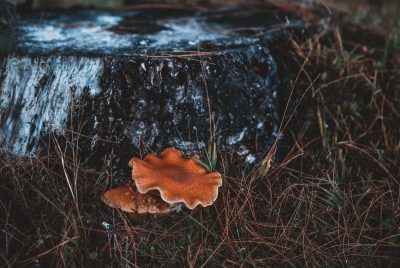The Reishi mushroom, or Ganoderma Lucidum, has been used in Asia for its medicinal value for…
Common Species of Poisonous Mushrooms

With there being up to 80 species of poisonous mushrooms on the planet, it’s important to realize that some of these closely mimic common edible mushrooms. So if you’re planning on foraging for mushrooms, whether for their medicinal value or just to add to your favorite dish, keep in mind the need to identify your catch.
Below you’ll find out about a couple of poisonous fungi that you might come across during your travels. Knowledge and an understanding for the threat of poisonous mushrooms is a must for anyone looking to delve into this subject. A great source of information on this topic for anyone living on the North American continent is The North American Guide to Common Poisonous Plants & Mushrooms
Death Cap (Amanita Phalloides)
The Death Cap mushroom has a fitting name because it’s one of the most deadly of all species when consumed. It can actually kill you from having only a few bites. This fungi is common across Europe and, more recently, has sprouted up in parts of Canada.
Death Caps have round silver caps on top and have pure white stems. Some grow up to nearly a foot in height, but most are around 4-6 inches. They usually grow under or around bushes and shrubs and often are found in urban environments. This fact makes them a danger to a populace uneducated to the understanding of poisonous mushrooms.
Another common danger with Death Caps is that they closely resemble edible Caesar and Straw mushrooms. So if you have foraged some edible fungi, crosscheck with a solid guide before attempting to eat your catch.
The Death Cap has amatoxins that will withstand the heat of cooking and begin to damage cells within the body. Usually in the range of 5-12 hours following consumption symptoms like vomiting, bloody diarrhea, and violent abdominal pain occurs. At this point, you can pretty much know it’s too late.
Pigskin Poison Puffball
The Pigskin Poison Puffball mushroom, or commonly known as the earthball fungi, is another dangerous species that anyone foraging for mushrooms should be able to identify. This fungi closely resembles the more common edible puffball mushroom. However, there are a few distinct differences that you can assess from closer observation.
The edible Puffball species have a single opening on the top of their caps through which its spores are released. The poisonous Puffball does not have this vent hole, it rather breaks up to release its spores. A fresh edible Puffball is usually white in the center, whereas it’s poisonous counterpart is darker colored.
While the Pigskin Poison Puffball will not kill you, it will give you a serious dose of gastrointestinal distress when consumed. Being exposed to the mushroom’s spores can give you an allergic reaction similar to those allergic to pollen as well.
Destroying Angels (Amanita Species)
Destroying Angel mushrooms are another deadly species of fungi. They are from the same species as Death Caps, and they’re almost quite as deadly. The Destroying Angel closely resembles other common edible fungi like Puffball, Button, and Meadow mushrooms. The main difference is that Destroying Angels have gills that are not attached to the stem. Rather they hang down and give the appearance of angel wings, where they draw their name from.
Destroying Angels are to blame for most of the poisonous mushroom deaths due to the lack of successful treatment. This is most likely on account of the 5-24 hour delay before symptoms begin to occur. Once the convulsions, diarrhea, vomiting, liver and kidney failure begin to happen it’s pretty much over for whomever consumed them.
Jack O’Lantern
The Jack O’Lantern mushroom gets its name from its vibrant orange colored skin complexion, and it also has the ability to glow in the dark. They are usually found at the base of hardwood trees or decaying stumps. The Jack O’Lantern mushroom that give off a greenish bioluminescence.
Unfortunately, the Jack O’Lantern is often confused with the more common edible Chanterelles mushroom. The key difference to look out for is that Jack O’Lanterns have gills and usually grow in clusters, where as the Chanterelles has no gills and are usually found alone.
While the Jack O’Lantern is poisonous to consume, it will most likely not kill you. Whether you cook them or eat them raw, they will usually only give you a healthy dose of vomiting, cramps, and diarrhea.
False Morels
False Morels is a terminology used to describe a few species of mushrooms that contain a chemical found in rocket fuel, which to humans is a toxin that can cause symptoms like vomiting, dizziness, and even death in rare cases. False Morels are often confused with common edible Morel mushrooms, which are a very tasty treat.
This is why when foraging for mushrooms you must be vigilant on identifying your catch using guides or referencing a professional. The good thing to know about False Morels is they most likely won’t kill you, rather you’ll only feel like total crap for anywhere between 8 to 12 hours. Only in rare cases do False Morals kill you.
Conclusion
There are a number of poisonous mushrooms out in the wild that closely resemble common edible fungi. Having the knowledge and patience to identify the right species of mushroom before attempting to eat them is paramount.
Like This Article? Pin it on Pinterest




